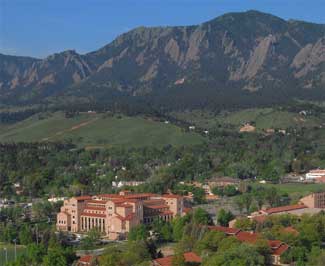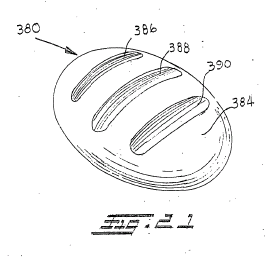Grammar always makes for an interesting subject during oral argument. In the oral argument of Sanofi Aventis et al. v. Apotex, Inc. et al., App. No. 2011-1048 (Fed. Cir. Oct. 18, 2011) several grammatical issues were raised. As background, the parties were arguing over the terms of a settlement agreement and whether the term “damages” included prejudgment interest. Part of this discussion, as you will hear, centered around the grammar of 35 U.S.C. sec. 284 which reads:
35 U.S.C. 284 Damages.
Upon finding for the claimant the court shall award the claimant damages adequate to compensate for the infringement, but in no event less than a reasonable royalty for the use made of the invention by the infringer, together with interest and costs as fixed by the court.
When the damages are not found by a jury, the court shall assess them. In either event the court may increase the damages up to three times the amount found or assessed. Increased damages under this paragraph shall not apply to provisional rights under section 154(d) of this title.
The court may receive expert testimony as an aid to the determination of damages or of what royalty would be reasonable under the circumstances.
(Amended Nov. 29, 1999, Public Law 106-113, sec. 1000(a)(9), 113 Stat. 1501A-566 (S. 1948 sec. 4507(9)).)
Judge Moore first raised the grammatical issue with Defendant-Appellant’s counsel and noted that she had been consulting her copies of Strunk & White and The Chicago Manual of Style: [Listen].
The issue came up again in the discussion with Plaintiff-Appellee’s counsel: [Listen] and [Listen].
This is the third time that I have heard Judge Moore refer to Strunk and White during various oral arguments. So, if you are making grammatical arguments to the court, you might take into consideration that at least one judge uses that text as a resource. However, it should be noted that another judge has commented during a different oral argument that “Strunk and White does nothing for me.”
There actually aren’t that many instances where grammatical texts have been cited in Federal Circuit decisions. Some of the texts that have been cited are:
1) C. Dallas Sands, 2A SUTHERLAND STATUTORY CONSTRUCTION, 4th ed.;
2) Leggett, Mead & Charvat, Prentice-Hall Handbook for Writers (6th ed. 1974);
3) S. Baker, The Complete Stylist and Handbook (3rd ed. 1984);
4) William Strunk, Jr. & E.B. White, The Elements of Style 27 (4th ed. 2000); and
5) Margaret Shertzer, The Elements of Grammar 47 (1986).
One of the issues in the third sound bite included above concerned whether “or” should be interpreted as a “non-exclusive disjunctive,” i.e., whether “or” can mean “and.” Judge Dyk had this to say about the statutory construction of the word “or” in his dissent from the denial of en banc review of McCormick v. Dept. of Air Force, App. No. 02-3031, (Fed. Cir. May 21, 2003).
Van Wersch rested entirely on the notion that we are compelled to interpret the word “or” in 5 U.S.C. § 7511(a)(1)(C) as not meaning “and” (an approach that our decision in this case applied to section 7511(a)(1)(A)). We held that “[t]o adopt the reading of the statute that the government urges would require us to ignore the meaning of the word `or’ that the dictionary, common sense, and the experience of life all bring to us.” Van Wersch, 197 F.3d at 1151. The consequence was that an individual falling under either (a)(1)(A)(i) or (ii) or (C)(i) or (C)(ii) was considered to be an “employee” with full appeal rights. In fact, we are not so constrained in the reading of the word “or”. The Supreme Court ruled over 100 years ago that “[i]n the construction of statutes, it is the duty of the court to ascertain the clear intention of the legislature. In order to do this, courts are often compelled to construe `or’ as meaning `and.‘” United States v. Fisk, 3 Wall. 445, 70 U.S. 445, 447, 18 L.Ed. 243 (1865) (emphasis in original). More recently, in an opinion by Justice Harlan, the Court in De Sylva v. Ballentine, 351 U.S. 570, 76 S.Ct. 974, 100 L.Ed. 1415 (1956), similarly stated that “[w]e start with the proposition that the word `or’ is often used as a careless substitute for the word `and’; that is, it is often used in phrases where `and’ would express the thought with greater clarity. That trouble with the word has been with us for a long tim[e].” Id. at 573, 76 S.Ct. 974. The Supreme Court then interpreted the word “or” in section 24 of the Copyright Act as meaning “and”, in order to give full effect to Congress’s intent as expressed in the evolution of the statutory provision and in the legislative history. Id. at 573-80, 76 S.Ct. 974. Our sister circuits have likewise read “or” to mean “and” or “and” to mean “or” in order to effectuate Congress’s intent. See, e.g., United States v. Moore, 613 F.2d 1029, 1040 (D.C.Cir.1979) (Interpreting “or” to mean “and” in 18 U.S.C. § 1623(d), because “a strict grammatical construction will frustrate legislative intent.”).[2] The present case is one of those cases where we must construe “or” in subsections (1)(A) and (1)(C) to mean “and.” The language is ambiguous, but the underlying purpose is clear.
Finally, the oral argument of Sanofi et al. v. Apotex, Inc. et al. features some very talented advocates. You can listen to the entire oral argument [here].
You can read the court’s opinion in Sanofi [here].



